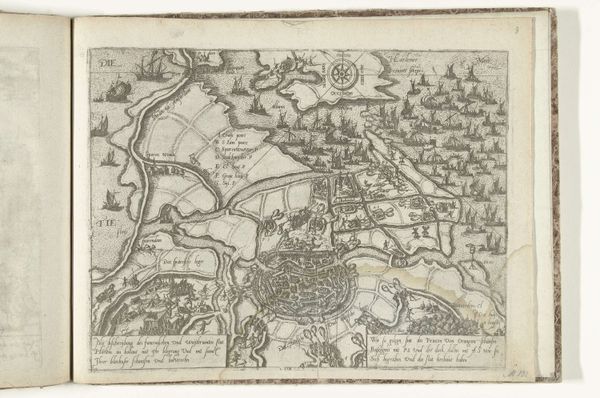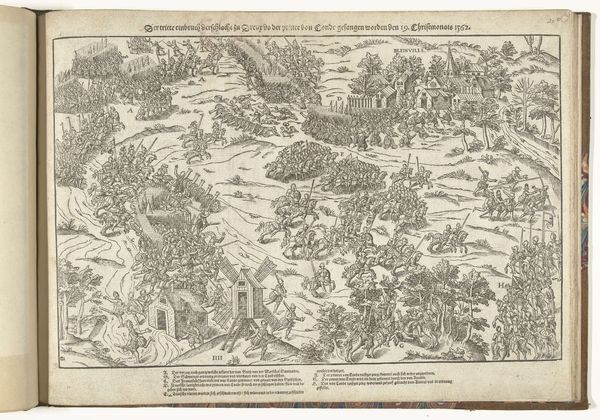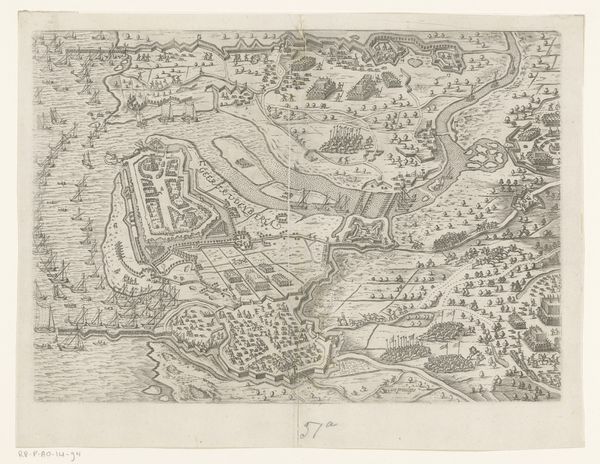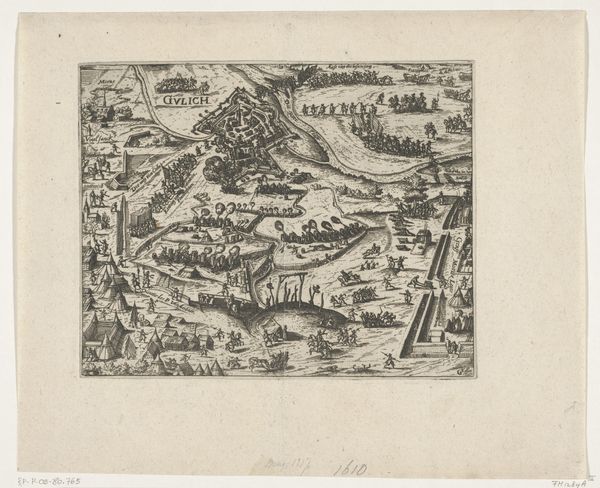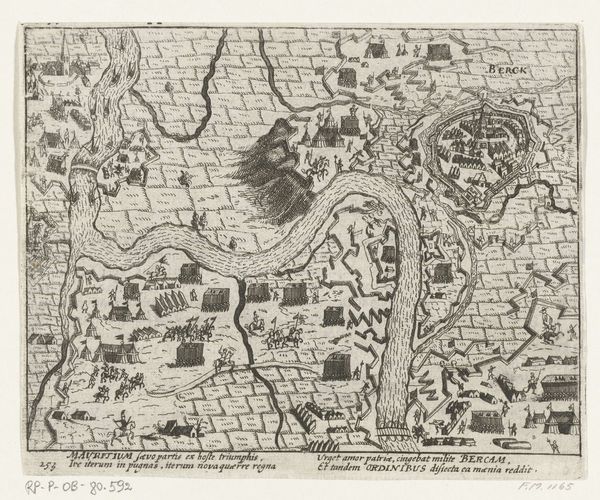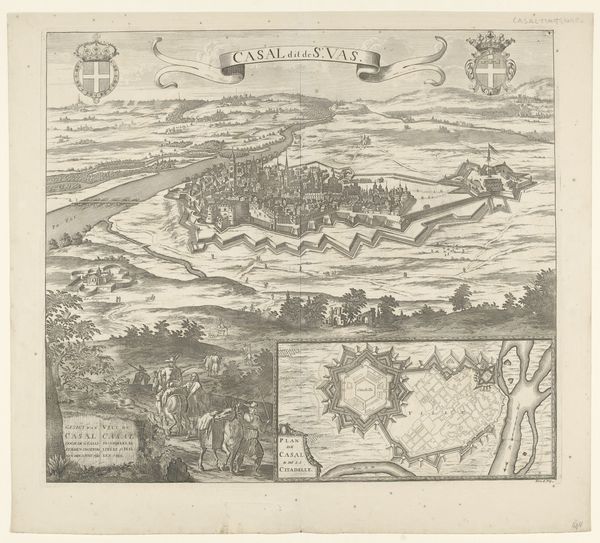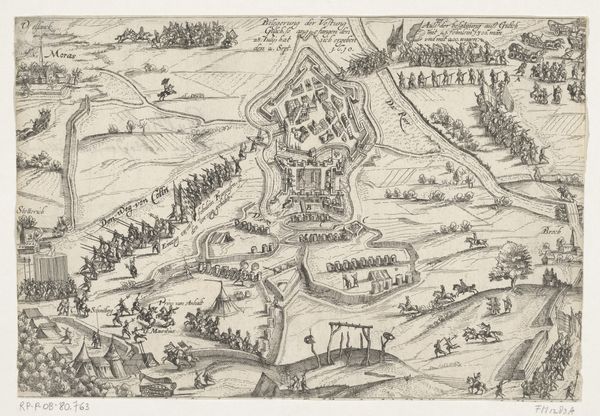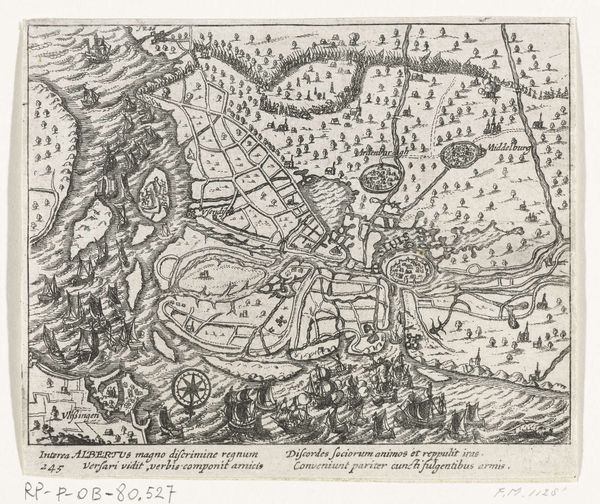
De tocht door Brabant: het Staatse leger voor Tienen (rechterhelft), 1602 1613 - 1615
0:00
0:00
print, engraving
#
pen drawing
# print
#
landscape
#
geometric
#
cityscape
#
history-painting
#
engraving
Dimensions: height 139 mm, width 175 mm
Copyright: Rijks Museum: Open Domain
Curator: This engraving, likely created between 1613 and 1615, depicts "The Journey Through Brabant: The States Army Before Tienen, Right Half, 1602". Editor: Wow, it's intense! It feels like looking at an ant farm gone to war. There’s a chaotic energy that almost vibrates off the paper, despite its small size. So much detail crammed into one scene. Curator: The anonymous artist, though we cannot ascribe the work, masterfully illustrates a pivotal moment during the Eighty Years’ War. Consider how the act of engraving, meticulously etching into the plate, translates into a meticulous documentation of history, shaping a Dutch national identity in conflict with Spain. Editor: Right, because what I’m seeing isn't just a record—it’s a perspective, etched in with intent. It reminds me of those epic fantasy maps you see at the start of a novel, but instead of dragons, it's troop formations and fortifications. But the message here is "war is hell." Look at how they diminish individual life through scale and massing; everyone becomes an indistinct shape. Curator: Exactly. This piece also offers a glimpse into the evolution of military cartography. See the bird's-eye perspective and the inclusion of that separate, smaller map in the upper right corner? The strategic visualization, and perhaps glorification, of military campaigns like Prince Mauritz's campaign is palpable. Editor: And I love that tiny, almost playful map. But overall, the dominant feeling is…overwhelm. I wonder how someone in the 17th century would process this? The level of detail could give an illusion of control over events that must have felt totally uncontrollable. Curator: Precisely. This image wasn't just information; it was propaganda and news. This work reinforces the narrative of a capable and divinely blessed military endeavor. The power to literally draw a moment in time! Editor: Thinking about the "divinely blessed" bit, I can’t help but see it as ironic, maybe a little cynical even. Seeing the sheer scale of the conflict so precisely rendered actually magnifies the absurdity of it all. It all looks kind of insane to my eye, with no end in sight. Curator: Indeed. In our contemporary understanding, we can appreciate this artwork's complex dialogue on nationhood, warfare, and its enduring resonance with current geopolitical tensions. Editor: Well said. It’s always interesting to reflect on the images of our past. Perhaps we might, hopefully, be inspired to chart a better course ahead.
Comments
No comments
Be the first to comment and join the conversation on the ultimate creative platform.

